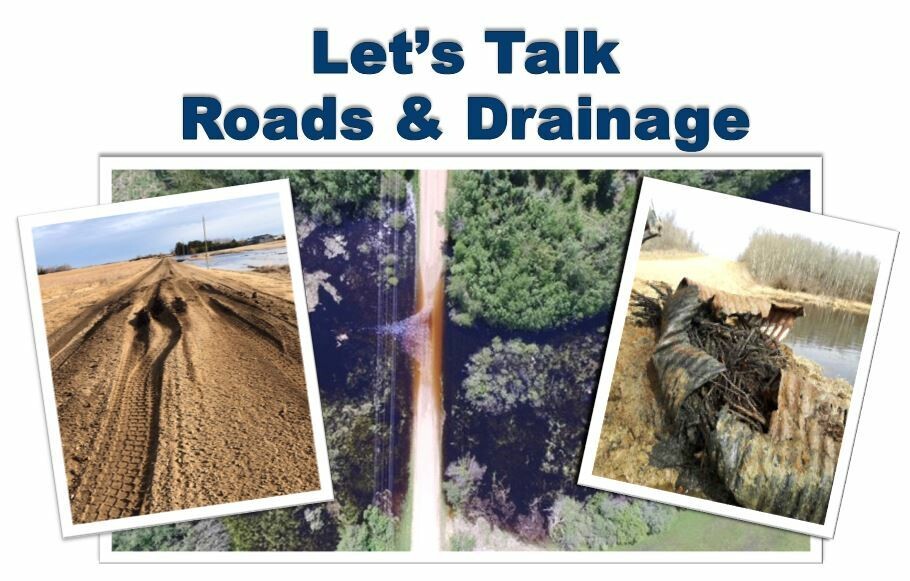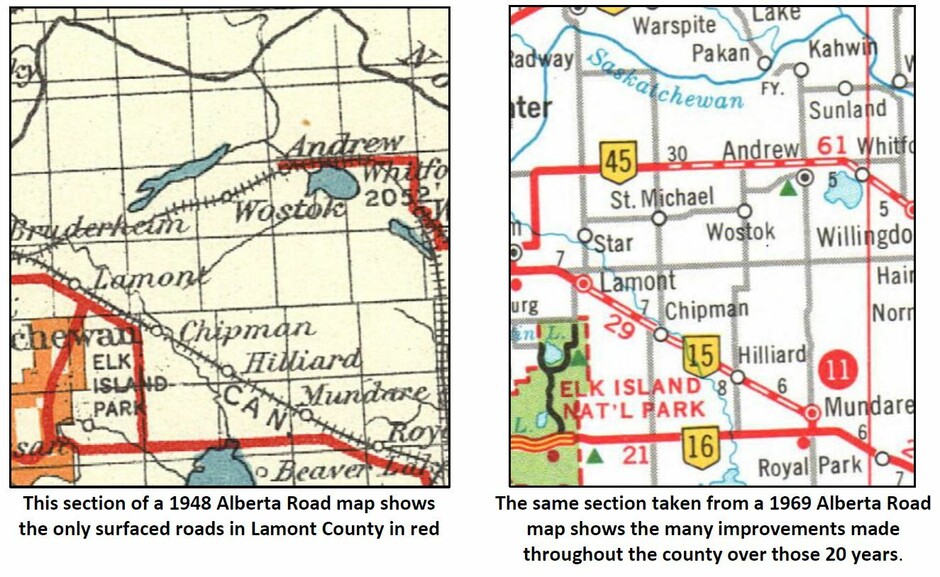
Infrastucture Improvement Planning
As the maintenance and improvement of Lamont County’s infrastructure is at the forefront of our priorities and focus, we are developing a strategy to modernize our infrastructure to better manage the demands of modern machinery and weather patterns. Lamont County Council wants to be open and transparent about this process. Ratepayers can be assured that the repairs won't be just cosmetic, but actual structural upgrades using better and new products along with older methodologies.
This is a project that is anticipated to take years to complete, because of its scope, labour needs and budget. Details of the rehabilitation program, along with the results of a drainage study, will be released in the coming months. Please watch this page for updates.
This page is intended to provide ratepayers with information about Lamont County's plans and progress for road and drainage improvements. Residents are encouraged to treat it as a digital "Open House", where they can find information and ask questions to be answered by experts in their field, which will include engineers, Alberta Environment and Parks, and Lamont County staff.
Scroll down the page to view all information:
- A (Brief) History of Roads, Weather & Drainage:
- Roads
- Weather
- Drainage
- Road & Drainage Improvement Strategy:
- Drainage Master Plan Overview
- Road & Drainage Improvement Strategy Presentation PDF
Any road and drainage maintenance concerns can be reported to Public Works through our Service Requests page.
A (Brief) History of Roads, Weather & Drainage
Lamont County has approximately 2089 km of local roads which are made up of 9.6 km of paved roads, 34 km of oiled roads, 1931.2 km of gravel roads and 116.3 km of undeveloped road allowances.
The majority of Lamont County’s road and drainage infrastructure was built approximately 70 years ago, in the 1950's. While the history of road building in Alberta is long, there was a big push after WWII to build roads across Alberta aided by the discovery of oil at Leduc in 1947.

Roads at the time were built up with organics and capped with clay. These roads were not built to withstand the size and weight of today’s farm machinery; therefore, those organics can be recognized today as black dirt pushing through the cap of the road. This is due to heavy machinery and/or vehicles applying pressure to the sides of the roads, which pushes up the middle.
Alberta weather history over last 20 years is a story of repeated drought and economic hardship for farmers. Starting in 1999 and lasting until 2004, the drought during this period was felt across North America and was considered the worst drought in 100 years. Alberta also experienced droughts in 2009 and 2010, and Lamont County declared an Agricultural Emergency due to dry conditions as recently as 2015.
For the past 20 years large parts of Alberta, including Lamont County, have not been receiving historical levels of precipitation. This has been a primary cause of flooding and drainage problems for the County over the past three years. Drainage infrastructure has not been tested with "normal" amounts of precipitation, and in many cases the topography has been altered (both intentionally and unintentionally) by farming operations occurring over the past two decades. In some cases, deliberate vandalism has altered the natural flow of water, which causes problems for landowners downstream.
The development of agriculture and of transportation networks has resulted in modifications to the natural drainage systems in Alberta. These modifications to land use and drainage patterns can be the source of drainage problems in rural systems.
Rural roads are designed to shed water into roadside ditches; in Alberta these ditches are usually wide and shallow with flat grades. In most cases roadside ditches are not drainage ditches; however, they can significantly help to manage runoff events. Since water is vital to plant growth, particularly in the form of soil moisture retention, agricultural drainage systems are not designed to be efficient in surface water removal.
The most significant impacts of agriculture on rural drainage systems are from either the drainage of wetland areas or the conversion of woodlands to pasture or cropland. These significantly increase the amount of runoff and erosion.1
So What Are We Going to Do About It?
After the 100-year flood that Lamont County received in 2018, which closed over 200 roads, it became clear that Lamont County needed to ensure infrastructure rehabilitation was a top priority and focus. A drainage study was commissioned with intent to create a Drainage Master Plan; the report is expected this fall.
A new position, Infrastructure Technologist, was created by County Council to better address all of Lamont County's infrastructure maintenance rehabilitation needs; the first preliminary report on County infrastructure maintenance needs was developed and presented to Council on June 3, 2020.
Drainage Master Plan Overview
Lamont County has retained professional engineering consultants to prepare a Drainage Master Plan for the entire county. The goal of the project is to “identify drainage issues, constraints, recommend policies, design criteria and infrastructure to prevent/mitigate flooding, erosion, protect the environment and facilitate future and orderly development”. The scope of this work is divided into two regional components, Rural Drainage and the Industrial Heartland.
Rural Drainage
In Rural Areas, drainage issues and flooding are widespread throughout the county during the spring melt and during heavy runoff events. The rural drainage problems are being caused by discontinuous drainage flow paths with inadequate ditches and roadways, undersized or undermaintained culverts and alterations of intermittent streams/tributaries.
In the Rural Areas, the Drainage Master Plan will provide geospatial information and design tools for:
- drainage catchments
- drainage paths and their classifications
- existing major culverts (size and condition)
- recommended road structure
- recommended culvert replacement sizing
This information will help the County to prioritize maintenance and improvement projects, to make informed decisions when resolving flooding and drainage issues, and to ensure that taxpayer money is well spent.
Industrial Heartland
In the Industrial Heartland, there is significant interest from industry and investors to bring large businesses and development into the region. At present, it is challenging for the County to review and approve development applications for the Heartland because there are limited stormwater design criteria, poorly defined stormwater outlets and no clear solutions for development priorities. This is stalling development and delaying opportunities, while potentially compromising the natural flow paths and environment.
The Drainage Master Plan will provide guidelines, policies, a phasing scheme and stormwater management criteria for development in the Industrial Heartland, which will expediate economic growth without compromising the environment.
The Drainage Master Plan will provide recommendations and design for major stormwater management infrastructure elements:
- management of development runoff to meet Provincial requirements
- standards for roadway ditching and culverts to convey the Heartland’s internal drainage
- engineered drainage solutions to receive the ditch flows and convey them to an adequate outlet.
1. Alberta. Municipal Program Development Branch. Environmental Sciences Division. Stormwater Management Guidelines for the Province of Alberta. [Edmonton, AB], 1999. S. 2.2. https://open.alberta.ca/publications/0773251499.
